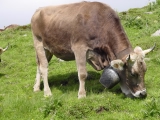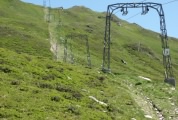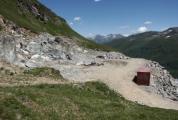 |
|
|
|
|
|
|
Many activities of humans lead to a change in the disturbance regime. |
|
|
|
The history of anthropogenic disturbance (disturbance by humans) in alpine ecosystems is very complex. Many alpine regions have experienced human impact for centuries, whereas in others, human influence is a relatively recent phenomenon. Whereas in the past alpine areas were used almost exclusively for livestock grazing and agriculture, leisure activities now have a very strong impact. These activities often extend into regions which were unused before. |
 1 1
 2 2
 3 3
|
|
|
|
The species living in the alpine environment have adapted to the historic disturbance regime. But they may not be adapted to the substantial additional impact by humans, which will have a long-term impact on the viability of these relatively fragile habitats. Furthermore, human activities may change plant communities and favour plants that are less well adapted to the more natural disturbance regime and are less effective in protecting against disturbances such as mudslides and avalanches. |
29 August 2011 |
||
| |
||